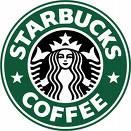Howard Schultz, Starbucks CEO, was in Italy with a group of partners to study the coffee market in the country. In the last months he has been working on the repositioning of Starbucks, trying to face the threats coming from aggressive competitors as McDonald’s. Coffee Taster republishes the letter from Howard Schultz.
* * * *
Dear Partners,
As I write you this note, I’m flying back to Seattle with a small group of Starbucks partners after spending a few days in Italy. No, we were not there to open our first store in Rome, although I’m quite certain that day will surely come. We were there to conduct a market visit to take in “all things coffee,” and to have strategic discussions with leading food and beverage companies.
We tasted and consumed coffee in every coffee bar we encountered. We saw elegant designs, experienced the artistry of baristas, ate fantastic food, and were introduced to new and interesting product ideas for the future. It was exciting for me to, once again, return to where it all began. The Italian people are wonderful. Their passion for life, their love of food and wine, and their coffee, is contagious.
During our visit, I made the following observations:
The Barista — The Barista is highly trained and very skilled. He presents each cup of espresso with great care and pride after intently watching the pour of the shot. He steams the milk as an artisan to produce a velvety foam, and from time to time, truly elevates his work to “art.”
The Coffee — This will probably surprise you (and hopefully you will not view my assessment as arrogant, but rather as honest), but the coffee was not that good. It turns out that most Italian coffee roasters blend their coffee with robusta beans. This is most likely because of a need for increased profit, but as a result of this decision, much is lost in the cup. The coffee leaves you with a strong, acidic, somewhat sour taste on the side of your tongue. This taste was unpleasant and disagreeable, but prominent in almost all the coffee we tasted.
Despite the change in the taste of the coffee, the experience we had was overwhelmingly positive on both a personal and professional level. We all felt a strong sense of pride in our company and in all of you. For many years now, we have been a respectful inheritor of the Italian coffee culture. We have built our business honoring the very things we saw and experienced. And, in some cases, I am humbled to say, we have improved it.
All of you deliver a world class experience to our customers — one that I believe Italians would praise. We have challenges and opportunities ahead of us, but as long as we embrace our heritage and tradition, have faith in our coffee, our values, and our core purpose, we will continue to win the hearts and minds of our customers. As for the coffee, we never have and never will blend our coffee with robusta beans. We will leave that for others. It is important to note that today; we ethically source higher quality arabica coffee than in any other time in our history. And, in my view, we roast it at a quality level that is better than in the past because of new technology.
So, this trip brought me back to where it all began, but at the same time reinforced how good we are and how far we have come. We learned a lot. And, we will utilize much of this learning to keep pushing for innovation, while at the same time embracing our core, our people, and our coffee. All of which I am proud to say would stand tall even in the greatest coffee theatre of them all.
Thank you for all that you do.
Onward,
Howard

 The first Starbucks venue was inaugurated on one of Warsaw’s main streets on 8th April soon followed, on 17th April, by the second premises in Wroclaw, a city with 640,000 inhabitants situated in south-west Poland. Both coffee shops were crammed straight away, mainly by school students who associate Strabuck’s image to the fulfilment of their American dream.
The first Starbucks venue was inaugurated on one of Warsaw’s main streets on 8th April soon followed, on 17th April, by the second premises in Wroclaw, a city with 640,000 inhabitants situated in south-west Poland. Both coffee shops were crammed straight away, mainly by school students who associate Strabuck’s image to the fulfilment of their American dream. After Coffee Taster reported Starbucks plans to open 150 new stores in Europe, a number of Italian readers wrote to us to know how they can open and run a Starbucks shop in Italy. Coffee Taster asked the question to Mrs Bridget Baker, Starbucks spokeswoman.
After Coffee Taster reported Starbucks plans to open 150 new stores in Europe, a number of Italian readers wrote to us to know how they can open and run a Starbucks shop in Italy. Coffee Taster asked the question to Mrs Bridget Baker, Starbucks spokeswoman.
